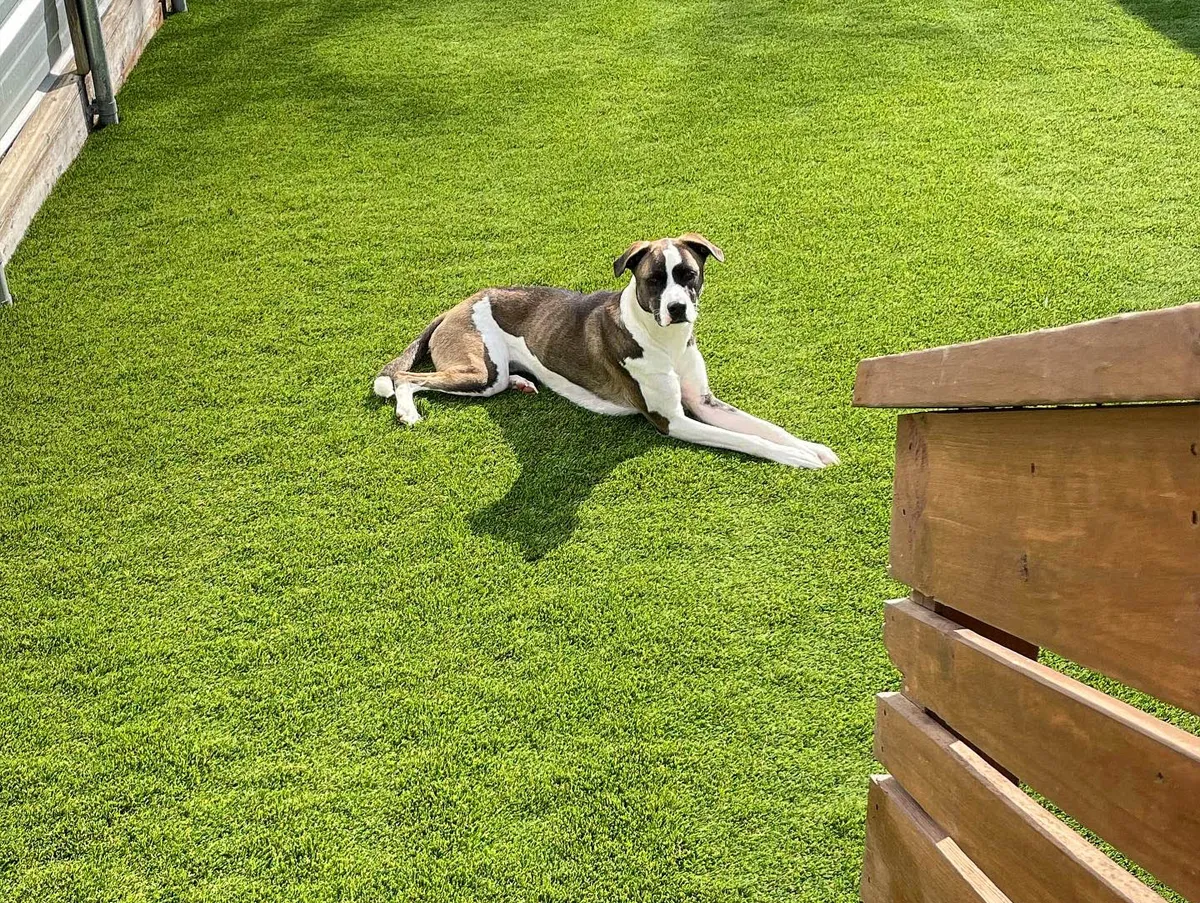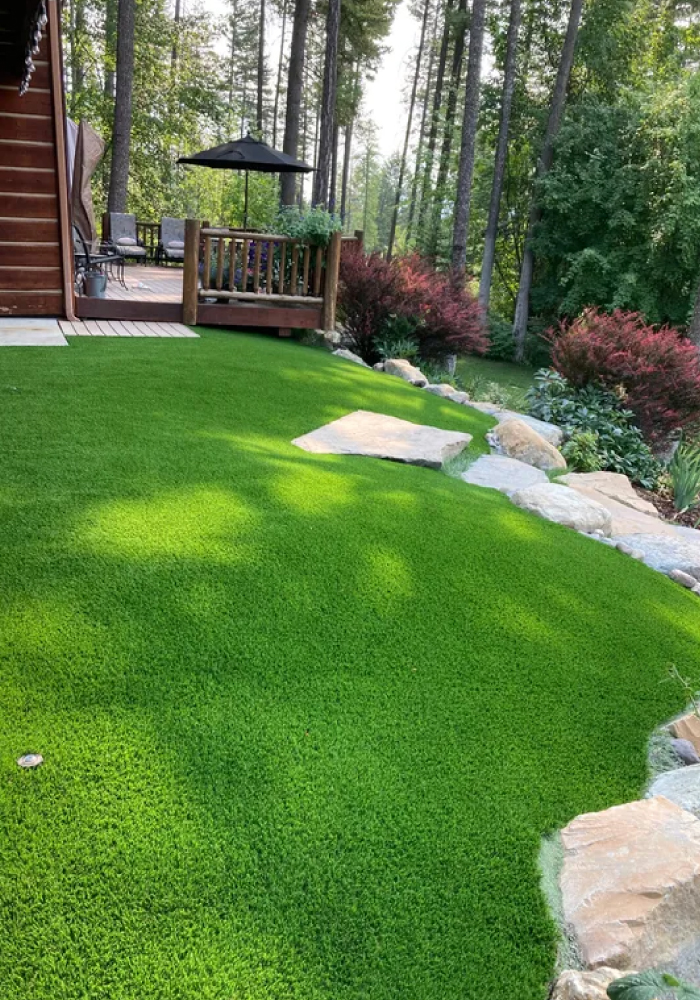Delve Into the Environmental Benefits of Opting for Artificial Turf Solutions
The fostering of man-made lawn services presents a compelling possibility to resolve pressing environmental difficulties. By considerably reducing water usage and lessening the application of hazardous chemicals, these alternatives not just advertise lasting landscaping but additionally secure regional environments. The lower carbon footprint associated with reduced upkeep activities contributes to an extra lasting strategy to land monitoring. However, the implications of these benefits expand past plain preservation efforts, elevating inquiries concerning their lasting effect on habitat conservation and general eco-friendly balance. Discovering these measurements reveals a complex interplay worth taking into consideration.
Water Conservation Perks
One of the most substantial benefits of artificial turf is its capacity to conserve water. In contrast, fabricated lawn does not need watering, considerably lowering the total need for water resources.
By getting rid of the need for regular watering, synthetic grass adds to lasting landscape practices and helps reduce the environmental influence of excessive water consumption. In addition, the preservation of water includes the reduction of drainage, which can cause soil disintegration and river pollution.
In addition, the installment of synthetic grass permits districts and homeowners to designate water sources more efficiently, focusing on vital usages such as drinking water and farming. The shift in the direction of synthetic grass not only advertises accountable water usage yet also aligns with wider environmental goals aimed at preserving natural resources.
As neighborhoods significantly prioritize sustainability, the water conservation benefits of synthetic turf present an engaging situation for its adoption in property and industrial landscaping jobs.
Lowered Chemical Use
The shift to synthetic lawn dramatically decreases the dependence on chemical therapies commonly utilized in natural lawn maintenance. Conventional grass administration normally includes the application of herbicides, plant foods, and pesticides to advertise development and control bugs. These chemicals can present threats to human health, local wild animals, and the setting, contributing to dirt and water contamination.
On the other hand, synthetic grass gets rid of the demand for these harmful materials. Once mounted, it calls for minimal maintenance, largely consisting of routine cleaning and seldom infill replenishment. This decrease in chemical use not only profits the instant setting yet also adds to broader environmental security. By lessening the release of artificial compounds into the ecological community, fabricated turf promotes much healthier soil and water systems.
In addition, the absence of chemical overflow connected with synthetic grass setups aids safeguard neighborhood rivers from air pollution, supporting marine life and preserving biodiversity. Arizona artificial turf. As areas progressively prioritize lasting methods, selecting fabricated turf provides a viable option that aligns with ecological preservation goals. Via this shift, residential or commercial property owners can appreciate lavish environment-friendly spaces without jeopardizing environmental health and wellness, leading the means for an extra lasting future
Reduced Carbon Footprint

Furthermore, the installment of synthetic grass can lead to significant water preservation. All-natural yards require significant amounts of water for watering, which not only contributes to the carbon footprint related to water removal and treatment yet likewise stress local water resources. In contrast, synthetic grass needs marginal maintenance, needing no watering, thereby considerably reducing water use and its linked power costs.
Furthermore, the long life of synthetic grass adds to its decreased carbon effect. With a life-span of approximately 15 years or even more, the demand for constant replacements is decreased, resulting in much less waste and reduced power intake in production and disposing of traditional grass alternatives. Overall, man-made turf provides a sustainable choice for eco conscious landscaping.
Environment Preservation
Habitat conservation is a crucial factor to consider in the debate over landscape design choices, specifically when contrasting synthetic grass to natural grass. Natural yard lawns usually call for extensive maintenance, including using herbicides, chemicals, and fertilizers, which can adversely impact local ecological communities. These chemicals can seep right into the dirt and waterways, harming indigenous plants and fauna and interfering with neighborhood environments.
Man-made turf removes the demand for dangerous chemicals, therefore shielding close-by wild animals and keeping the stability of bordering ecosystems. The click for info installation of artificial lawn can lead to the conversion of former yard areas right into even more biodiverse landscapes, such as pollinator yards or indigenous plant locations, which can sustain neighborhood wild animals.
Eventually, the change to fabricated lawn not only conserves water and decreases maintenance efforts yet also cultivates a more harmonious connection between human activities and the natural atmosphere, promoting environment conservation at the same time.
Long-Term Sustainability
Long-term sustainability is a crucial aspect in reviewing the advantages of synthetic grass over typical turf lawns. Among the most substantial benefits of fabricated grass is its toughness; it can last up to 15-20 years with very little upkeep, whereas all-natural yard needs frequent reseeding and substitute. This longevity minimizes the requirement for constant sources, such as water, plant foods, and chemicals, which are vital for keeping a healthy and balanced grass lawn.
In addition, synthetic grass adds to a decrease in carbon discharges connected with lawn care equipment. Conventional lawns frequently need gas-powered lawn mowers, leaners, and blowers, all of which add to air pollution. Arizona artificial turf. On the other hand, artificial lawn eliminates the need for such equipment, advertising a cleaner atmosphere
Moreover, the manufacturing of man-made lawn significantly uses recycled products, boosting its sustainability profile. As makers take on environmentally friendly practices, the ecological footprint of artificial lawn continues to reduce.

Final Thought
The fostering of artificial turf solutions provides significant ecological benefits, consisting of significant water conservation, minimized reliance on damaging chemicals, and a lower carbon footprint. Additionally, artificial lawn help in preserving all-natural habitats by decreasing land disturbance and advertising long-lasting sustainability with the usage of durable products. Collectively, these elements emphasize the potential of artificial turf to contribute positively to environmental health and wellness and supply a feasible option to standard landscaping methods in a progressively resource-conscious world.
In contrast, man-made turf does not require watering, significantly lowering the total need for water resources. By reducing the launch of synthetic compounds into the community, synthetic grass promotes much healthier dirt and water systems.
Furthermore, the installation of synthetic lawn can result in significant water conservation. In comparison, man-made lawn requires minimal upkeep, needing no watering, thereby significantly reducing water usage and its linked energy expenses.
